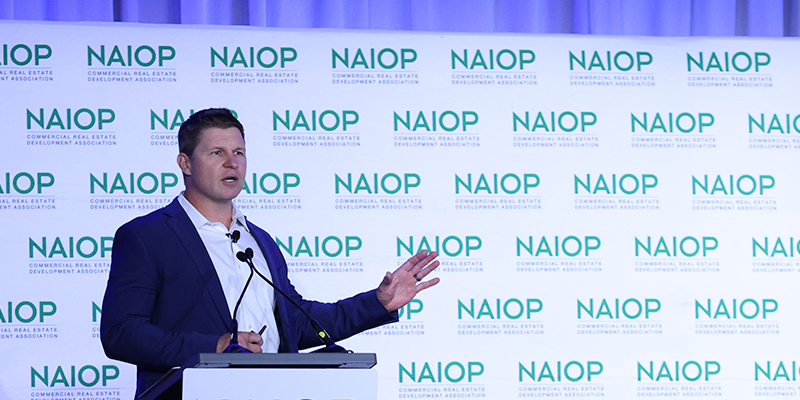Lab sciences is one of the most talked-about sectors in real estate right now – but how can a traditional office building owner court these companies as tenants? By understanding what lab sciences leaders look for in potential lab and office space, commercial real estate owners can determine whether their buildings might be prime candidates for this dynamic market.
Today’s lab sciences firms are booming across the spectrum, from record-breaking investment in life sciences to unprecedented technological breakthroughs in materials science and electrical engineering. Add in intensifying talent wars and extreme pressure to get innovative products faster to market than ever before, and it’s no wonder there’s extreme competition for quality space.

At the same time, the great work-from-home experiment of the last 20+ months inspired professional services firms to rethink their footprints. As tenant demand shifts from familiar faces to new ones, many building owners are asking what it might take to convert, say, a Class A office building into a desirable lab space.
The answer depends on a variety of factors, including location, structure and more – but it may be more feasible than you think.
Five Ways to Win Lab Sciences Tenants
How can you break out of the decades-long mold of owning a conventional office property? A little creative thinking – backed by engineering insight – goes a long way.
Consider the following on your journey to a scientific-tenant-friendly building:
- Get up to speed on prospective lab sciences tenants. If you’re not already familiar with the various lab sciences categories, now’s the time to learn some basics.
Wet labs work with biological matter and therefore have stringent requirements for air filtration, plumbing, equipment, waste disposal, life safety and fire protection. But dry labs, which focus more on applied and computational mathematical research, can more easily plug into existing real estate.
Many different types of lab sciences needs exist, from dialysis samples to small electronics manufacturing, to general labs akin to your old high school chem lab. Startups are also bringing new momentum to the market – and unique space needs, such as access to flexible lab space, as well as more meeting-oriented office space. - Understand the role of your building’s location. Professional services and other office-anchored work need locations that will appeal to staff as well as the clients and customers they serve. In life sciences, however, it’s more important to have the right functioning space than to offer a convenient location for customers.
That said, location is key to recruitment and retention for your prospective tenants. For those reasons they’ll favor real estate options in a bustling market, preferably near universities or medical campuses, and where life sciences innovators may be able to rub shoulders with others on the street. However, still keep an eye on locations that are attractive in the market more generally; for example, Skender is building out a company’s research and development lab space in an office building in an exciting neighborhood.
You’ll also need to ensure any lab science facility needs won’t disturb neighbors in, say, a residential area. Lab work that disposes of chemical load via the exhaust fans shouldn’t be near an apartment building with porches, for example. So, before taking on a tenant, consider how their particular work would affect any neighboring areas. - Evaluate your building structure to learn what it can handle. Can your building accommodate the intensive systems that lab sciences firms require? Labs typically need more technically sophisticated structures with more complex mechanical systems. Structurally, they’ll need more risers and shafts than an office building would.
Access to adequate power is also critical. Life sciences tenants use an average of seven times more electricity than office tenants because their equipment and systems need more finely tuned environments, from air conditioning and fans to exhaust and electrical load systems.
Conduct a feasibility study with a mechanical and electrical engineer to determine your best course of action when such tenants come knocking. - Remember the human experience for talent. Amid the war for talent, lab sciences tenants want buildings that prioritize convenience and offer flexible layouts. So, for example, these tenants might look favorably on secure parking lots and/or showers and locker rooms for their bike-to-work contingent.
Within the workspace, they also tend to value flexible design that facilitates collaboration and engagement, with easy access to shared spaces as well as comfortable, inviting break rooms where employees can catch a breath. - Provide private access to non-public-facing infrastructure. Avert awkward elevator moments by keeping orange biohazard-labeled materials out of common elevators. Because they work with specialized equipment and sensitive chemicals, lab sciences tenants need a private way to get in and out of their space without running into other tenants. This often includes a loading dock, a dedicated service elevator, and private storage areas.
Are You Ready to Capitalize on This Growing Market?
Demand for quality lab sciences space is only expected to rise. By adapting existing space to accommodate their specific needs, building owners can reposition their portfolios for a more resilient future.










